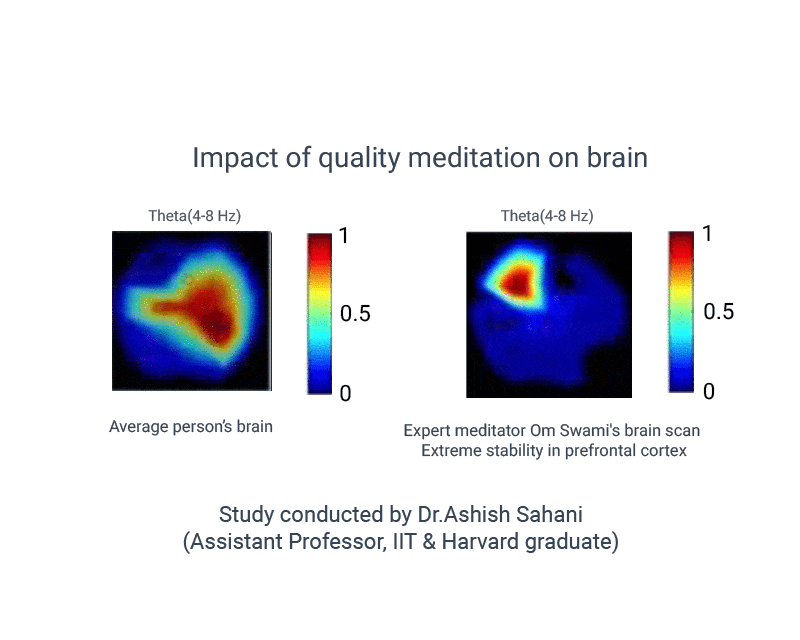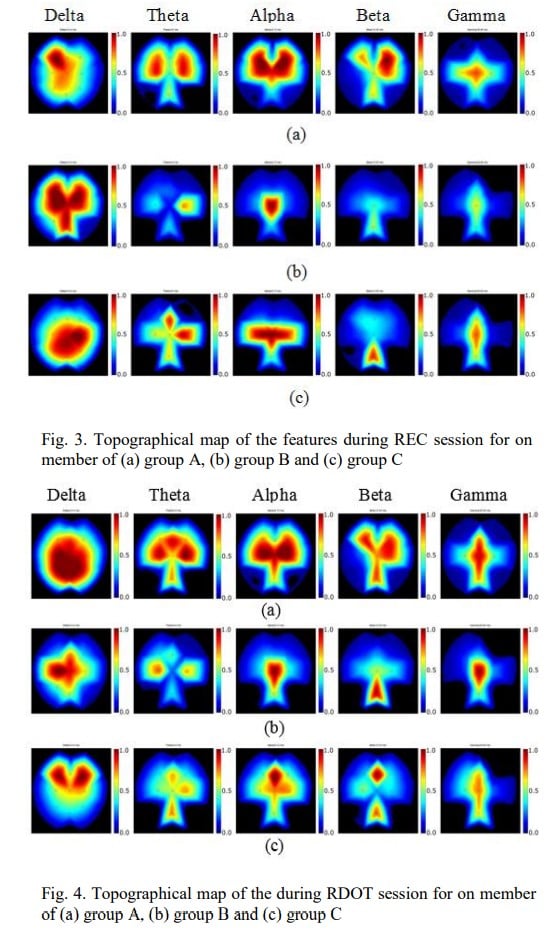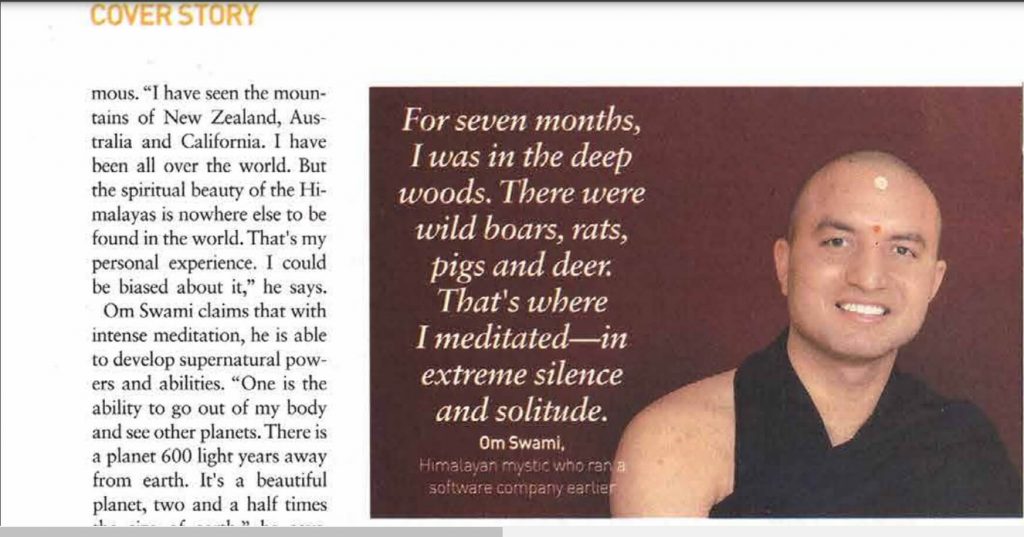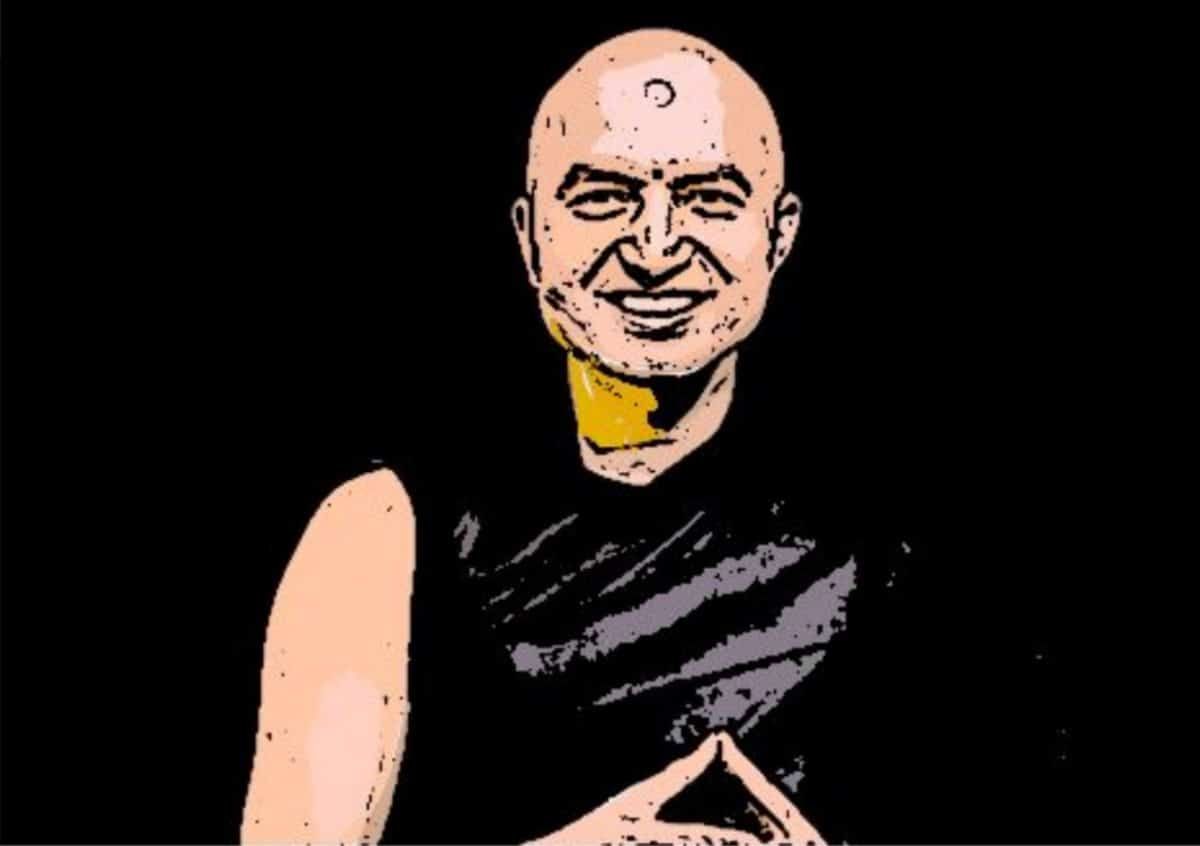Just the other day when I visited the hospital for a checkup of my genius brain; Oh! lie the way, here how I fantasize it looks :

But after examining it the doctor concluded this: My brain’s almost on its last stage!

Now that you have seen and understood the condition of my brain, now let’s move “into the depths of our mind” published by THE WEEK on March 12, 2017, by By Mini P Thomas to examine the mind of the genius aka Om Swami. The article includes interviews and excerpts of Sadhguru, Om Swami, brain study of Dalai Lama’s students, testimonials of Art of Living by Sri Sri’s teachers, etc…btc…
All of us get gamma for a very short period when we solve a problem we’ve been grappling with, even if it’s something that’s vexed us for months. We get about half second of gamma; it’s the strongest wave in the EEG spectrum. But that lasts very short period in an ordinary EEG. What was stunning was that the Olympic level meditators, their brainwave shows gamma very strong all the time as a lasting trait just no matter what they’re doing. It’s not a state effect, it’s not during their meditation alone, but it’s just their every day state of mind. We actually have no idea what that means experientially. Science has never seen it before.
Daniel Goleman, Psychologist and Science Journalist, Co-Author – Altered Traits

Now, before going any further lets learn about the different brain waves and their function, and yeah bear with me on this as if my brain being on its last stage of its survival could easily understand these scientific terms then definitely your black lotus powered up mind will.
ROLE AND TYPES OF BRAINWAVES
Delta Waves: (1-4 Hz) are slow brainwaves, which begin to appear in stage 3 of the sleep cycle, and by stage 4 dominate almost all EEG activity. At this stage, healing and regeneration are stimulated and are considered essential for the restorative properties of sleep.
Theta waves: (4-8 Hz) are particularly involved in day-dreaming and sleep. Cortical theta is observed frequently in young children, but in older children and adults, it tends to appear during meditative, drowsy, or sleeping states. In theta, we are in a dream; vivid imagery, intuition and information beyond our normal conscious awareness. It’s where we hold our fears, troubled history, and nightmares. Theta is our gateway to learning, memory, and intuition. In theta, our senses are withdrawn from the external world and focused on signals originating from within.
Alpha waves: (8-12 Hz) dominate during moments of quiet thought, and similar to meditative states. Alpha brain waves are present in deep relaxation and usually when the eyes are closed. It is an optimal time to program the mind for success and it also heightens your imagination, visualization, memory, learning, and concentration. Alpha waves aid overall mental co-ordination, calmness and alertness, mind/body integration and learning.
Beta waves: (12-30 Hz) represent our normal waking state of consciousness when attention is directed at cognitive tasks and the outside world. Beta is ‘fast wave‘ activity and dominated when we are alert, attentive and engages in problem-solving, decision making and focused mental activity.
Gamma brainwaves: (30-100Hz) have the highest frequencies of any brainwave, oscillating between 30 to 100 Hz. They are associated with peak concentration and high levels of cognitive functioning. Asynchronous burst of gamma bandwidth has been found during “ah-ha” moment

Now that you have a great understanding of the different brain waves so you can go out and disprove the theory of gillettevity by Hritikbert Dumbstein. Anyway, here you go with the official research papers conducted on Swamiji’s brain shared publicly by Gaurav and Abhijit Sahoo from IITR and IITM on ResearchGate.
Study on Swamiji’s brain
Swamiji talking about the study on his brain:

An analytical experiment on three categories of subjects (A: an expert meditator, B: five moderate meditators and C: five non-meditators) was done. Each subject was guided to perform two visual tasks; first to sit relaxed with eyes closed (REC) and second to gaze on a dot on screen (RDOT); supplied, EEG being recorded in parallel.
For this study, we took three category of subjects based on their meditation practice and level of experience. First group (A) has only one person, Om Swami (male, age 38 years), a Himalayan mystic with broad training and experience of Yoga (25 years of practice in meditation and mantras) [13]. During the experiment subject went into Samādhi sate, which was recorded and studied in this paper. Second group (B) have five meditative practitioners with more than 3 years of meditation practice (all male, age: 21- 30 years). Third group (C) is control group of five subjects (all male, age: 21-30 years) without any practice or exposure to meditation.

Get the research papers openly accessible on ResearchGate courtesy of Gaurav and Abhijit, in any case, if you have tried to open up the research papers from the links on Swamiji’s YouTube channel and on the black lotus website, which will redirect you to IEEE website where one needs to log in through one’s institution to access the material.
Interview with Om Swami published in the Week :

For some like Om Swami, a Himalayan mystic, meditation is a way of life. “I no longer have to sit and do meditation. I don’t know how to come out of meditation. I have deep sensations in my brain all the time. Scientists have studied my brain. They couldn’t find a normal state in my brain; there was only the super state and the peak state,” says the 37-year-old management graduate who ran a software company before embracing spirituality. “I spent 13 months in the Himalayas, of which 100 days were in extreme solitude. I lived in absolute extreme conditions. Sometimes I would just eat snow. Sometimes, I stayed in a cave in the Himalayas. Then for seven months, I was in the deep woods. There were wild boars, rats, pigs and deer. That’s where I meditated—in extreme silence and solitude.”
Om Swami has set up an ashram in the Himalayas, where, he says, there is a spiritual vibration that is just enormous. “I have seen the mountains of New Zealand, Australia and California. I have been all over the world. But the spiritual beauty of the Himalayas is nowhere else to be found in the world. That’s my personal experience. I could be biased about it,” he says.
Om Swami claims that with intense meditation, he is able to develop supernatural powers and abilities. “One is the ability to go out of my body and see other planets. There is a planet 600 light years away from earth. It’s a beautiful planet, two and a half times the size of earth,” he says. Swami then sits still and asks me to put my hand on his pulse. The pulse is missing! “I can shut down my heart beat, regulate the body temperature and change my blood pressure,” he says.
Om Swami would meditate for 22 hours a day at the peak of his practice. “I didn’t reach that state overnight. There is a structured way of championing meditation. It is like learning a musical instrument. In the beginning, you may not be able to play Beethoven’s stuff. You should be happy if you are able to focus for five minutes. Then refresh your concentration and resume. The first one hour is so hard to get to. One hour to one and a half hours takes a long time. Once you cross 4 hours, then you make giant leaps,” says Om Swami, who recently came out with a book on meditation, A Million Thoughts.
SOURCES :
- Img 1 : Matrix movie
- Img 2 : MPL ad
- Img 3 : blacklotus.app website
- Img 4 : ResearchGate
- Img 5 : The Week
Research papers link : ResearchGate
The Week article website : The Week
The Week article in print : Isha Foundation
Brain waves discription : NeuroFeedback
Earlier Posts :









Comments & Discussion
33 COMMENTS
Please login to read members' comments and participate in the discussion.